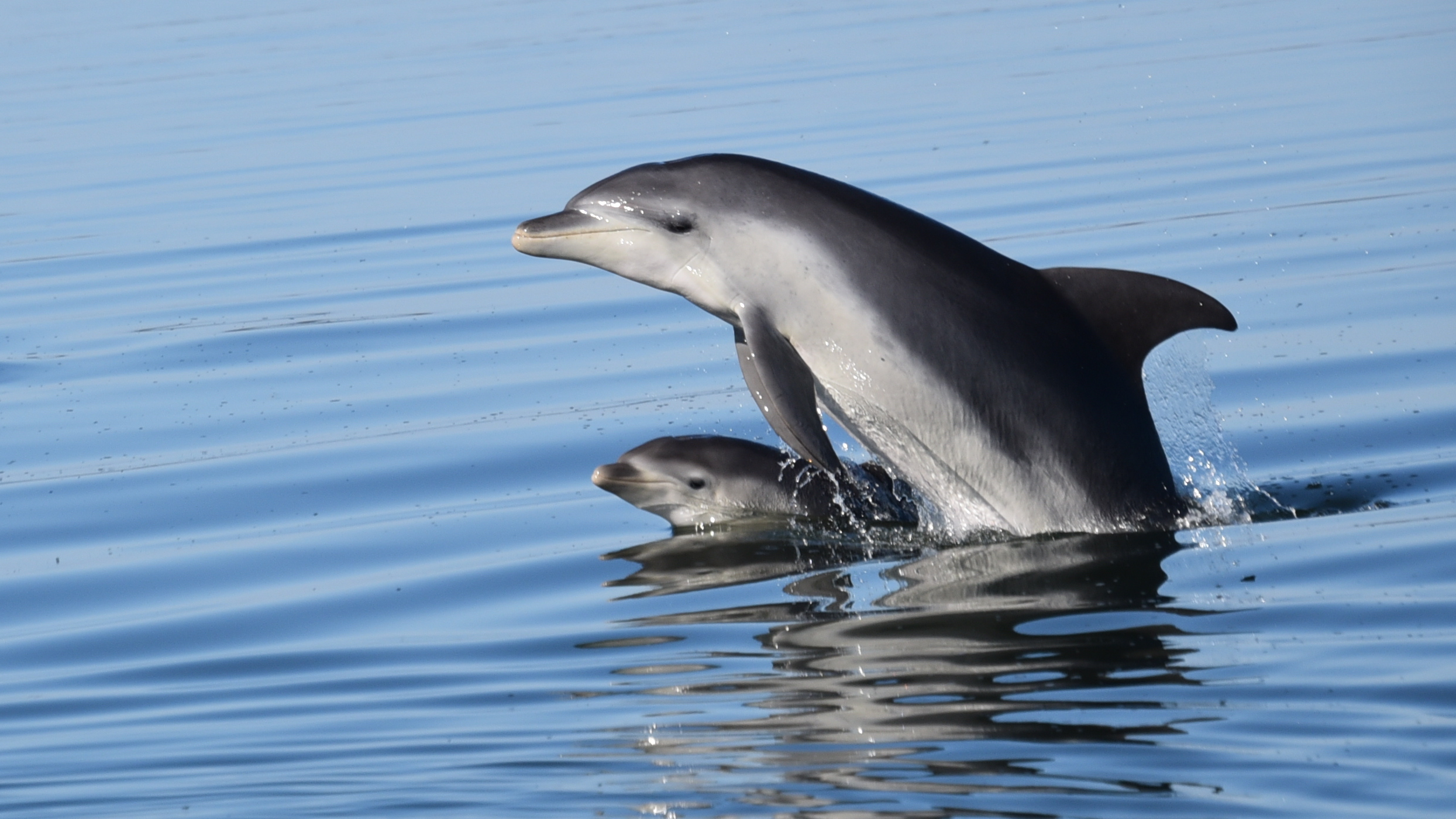
Port Phillip Bay is home to one of the two known Victorian populations of Burrunan dolphins, the other in Gippsland Lakes. The Burrunan dolphin (Tursiops australis) was first described as a new species in 2011 (Charlton-Robb et al. 2011). The species is listed as Critically Endangered under Victoria’s Flora and Fauna Guarantee Act 1988. The species is also recognised as the common bottlenose dolphin (Tursiops truncatus) by other non-government organisations as well as within Commonwealth waters (waters beyond 3nm from the coastline). While the current status of the Port Phillip Bay's Burrunan dolphin in 2021-2022 was

Photo credit: Marine Mammal Foundation
Good and the trend is Improving (status in Graph 1 informed by Lecetera et al. 2023), this status is based on a very small population size and is informed by research limited to the southern part of the Bay. Long-term research is required to better understand population trends, movement patterns, population stability and threats. Research efforts and data synthesis are underway to incorporate Bay-wide information to improve future status reporting. The data displayed for the Burrunan Dolphin is currently up to date with the research and information available. The next information update will be aligned with research and monitoring program timelines and made available when possible.
While the dolphin population remains fairly understudied, research to assess the dolphin population has been undertaken by the Marine Mammal Foundation applying novel Passive Acoustic Monitoring (PAM) alongside traditional ecological studies.This research indicates a small population size (83 individuals; Graph 2) within Port Phillip Bay, a Bay-wide distribution across all seasons and seasonal variation in distribution patterns across the Bay, demonstrating whole-of-Bay habitat usage and potential site fidelity of individuals/pods. A recent publication using opportunistic photo-identifications image techniques from ecotourism companies operating in southern Port Phillip Bay concur the population utilising southern parts of the Bay is small (<45 individuals, Graph 1), however relatively stable.
Known threats to the Port Phillip Bay population are documented as tourism, high mercury levels, lack of genetic diversity, and more recently PFAS (Foord et al. 2024). Additionally threats documented for the Gippsland Lakes population, including freshwater skin disease and recreational vessels may also impact the Port Phillip Bay population.
Data contributors and acknowledgements:


Page last updated: 30/10/25